Charleston SC is rich with interesting history. When we started out writing this article we were going to name it "10 Interesting facts about Charleston SC" but we quickly realized there were way more interesting stories about Charleston that we wanted to include so instead we leave it to you to count how many intriguing facts about Charleston you can find.
Who was Charleston named after?
Charles Town, South Carolina was named after the British King Charles II. The name Charles Towne was shortened to Charleston after the Revolutionary War when it became unpopular to honor the British kings.
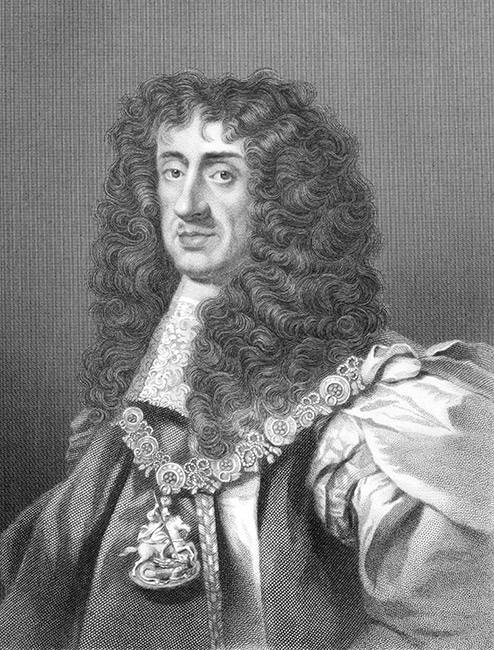
Arrggggg! Pirates be welcome here!!
In its beginnings, Charles Towne was more connected commercially with Europe and the West Indies than it was to the other American colonies.

In its early days, although the Charles Towne harbor was an asset for trade with Europe and the West Indies, its location on a peninsula between two rivers, the convergence of which forms the Charleston Harbor, made it vulnerable to both land and sea attacks by the French, the Spanish, the Indians and by pirate ships.
At first, pirates were welcomed in Charles Towne’s harbor because they provided protection from raiding Spanish ships. The pirates also provided profit as these thieves came ashore and paid for supplies with Spanish gold and silver that they stole and they sold their plunder for far below its value.
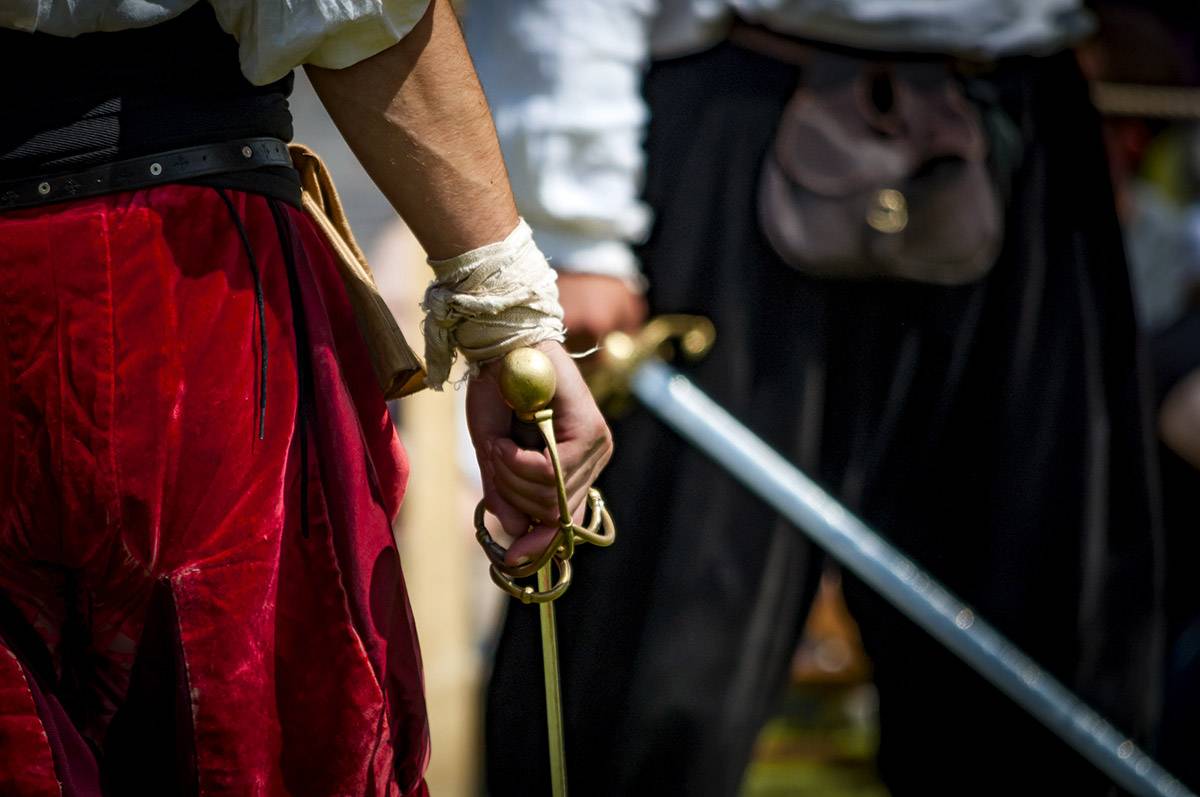
However, there were many pirates that were not friendly to the settlers and threatened Charleston. The most widely known pirate was Blackbeard, believed to be a well-educated man, unlike the many barbaric pirates that roamed the seas. Blackbeard teamed up with another ‘gentleman’ pirate, Stede Bonnet, a member of the aristocracy of Barbados who gave up his life of ease to journey the oceans, preying on trading ships and vulnerable ports. Eventually, to protect the Harbor and the city, in 1829 a fort was built on a man-made island at the mouth of the Harbor called Fort Sumter.
How many years did it take to build the island where Fort Sumter sits?

Thats right! Fort Sumter is not a natural island. Fort Sumter was built to protect Charleston from naval invasion. It sits on a man-made island that took over 10 years to build from granite and rock brought from New England to make the island’s foundation.
Fort Sumter is famous for being the site where the first shots of the Civil War were fired. It’s now a National Historic Site. Fort Sumter is named after the Revolutionary War General Thomas Sumter, who became known as the “Gamecock.”
Why did the University of South Carolina name their football team the Gamecocks?
Ok so this one is not exactly just about Charleston but the story originates from Charleston SC.
General Thomas Sumter was a native of Virginia, but became a key leader of South Carolina during the American struggle for independence. He was such a powerful enemy of the British during the Revolutionary War that the British called him “The Fighting Gamecock” due to his never-give-up attitude. Sumter was devotee of the sport of cockfighting as a young man and during battle exercised fierce, guerilla-style strategies against the strictly conventional Redcoats.
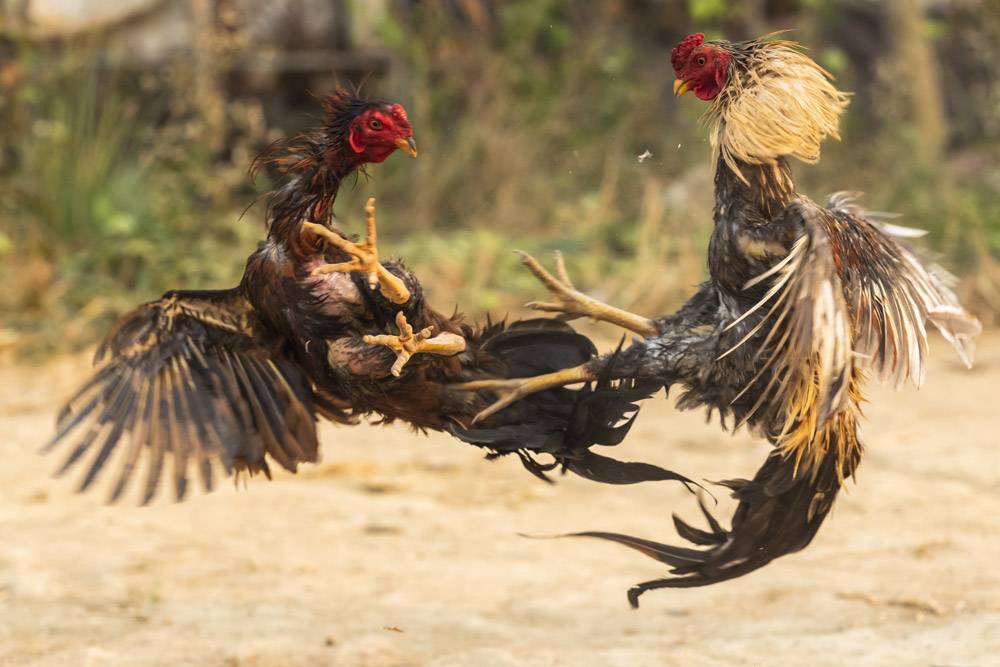
The town of Sumter honored him by adopting his name and is known as Gamecock City. The University of South Carolina also paid tribute to him by nicknaming their football team, the Gamecocks. Sumter died at the ripe old age of 97 in his adopted home of South Carolina.
Where did the Ashley and Cooper Rivers get their names?
As one of British King Charles II’s important loyal supporters, the Earl of Shaftsbury was bestowed the land grant on which the city of Charleston sits. Shaftsbury was a Quaker whose given name was Anthony Ashley Cooper. Although the Earl never set foot in Charles Towne nor even in America, he established the original street plan of what would become the largest and most important city in the South up to the Civil War. In his honor, both the Ashley and Cooper Rivers were named after him as well as many other landmarks.
How did Charleston become known as The Holy City?
Those who were issued land grants in the land known as Carolina were able to attract settlers to the area by drawing a legal document that guaranteed all settlers would receive parcels of land and would have religious freedom. As a result of this religious tolerance, Baptists, Huguenots, Jews, Presbyterians, Puritans and Quakers were drawn to the Lowcountry (the name by which the coastlands of Carolina became known).
One of the monikers by which the city of Charleston became known was The Holy City. It was not due to the ethical or moral nature of the city or its people, but due to the plethora of churches and places of worship that were built there. When approaching the city by sea, so many church steeples were visible that it garnered the name, The Holy City.
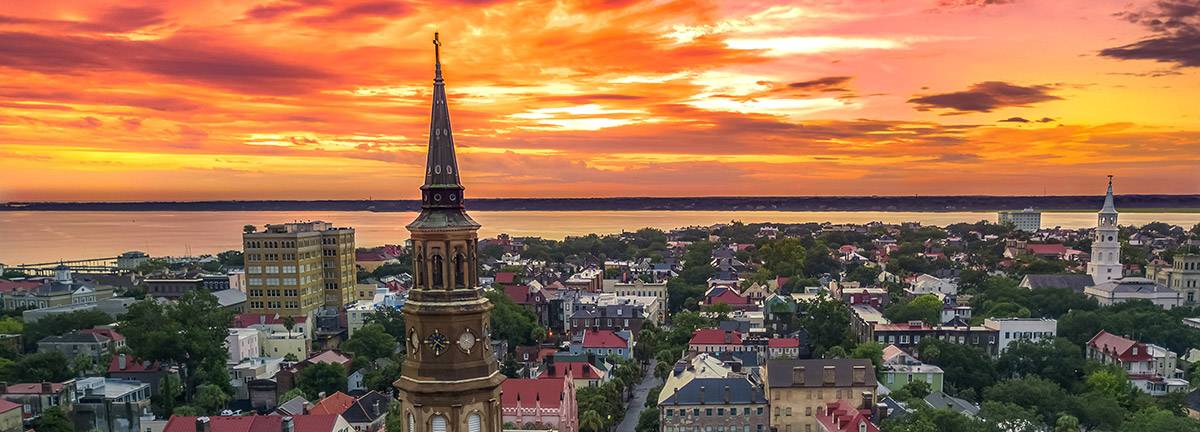
Charleston has survived fires, epidemics, floods, hurricanes, a major earthquake and repeated enemy bombardment beginning with the founding of Charleston in 1670 to the Revolutionary War, the Civil War, the Spanish American War, World War I and even World War II. Some attribute Charlestons survival nature to chance while others say it is a city that is blessed!
First Things First !!!

Dock Street Theater
Charleston has the distinction of boasting several of America’s ‘firsts’. The Charleston Museum was America’s first museum; Charleston’s Dock Street Theater was the first theater built in America; Harleston Green was America’s first golf club; The College of Charleston is the oldest municipal college in America; Magnolia Plantation and Gardens is the oldest public gardens in America; North America’s longest cable-stayed bridge, the Arthur Ravenel Jr. Bridge, connects historic Charleston to Mount Pleasant extending across the Charleston Harbor.

Magnolia Plantation
Charles Towne was also one of the first cities in America in which the African presence began. Most of the enslaved Africans of the Lowcountry were descended from Central and West Africa, making the history of Charleston intertwined, in part, with the West Africans who brought with them foods such as okra, peanuts, black-eyed peas, sweet potatoes, collard greens, sesame seeds and recipes such as gumbo and rice pilau. Many of those foods and recipes were adopted by white Carolinians and have become traditional Southern culinary favorites.
Do you know what's Gullah?
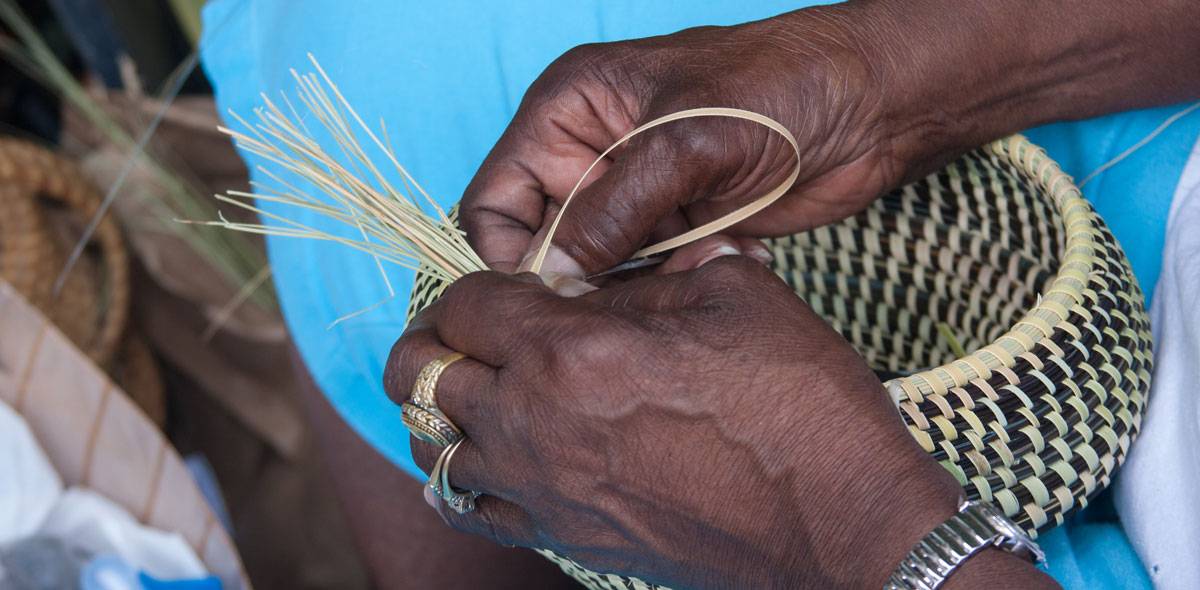
It's not just sweetgrass baskets, okra soup, or shrimp and grits although these are some of the most identifiable aspects of the Gullah culture that tourists will encounter on a visit to Charleston.
Gullah refers to a specific community of people who are the descendants of formerly enslaved Africans. The name Gullah, it is believed, comes from the West African country of Angola, from which many of the enslaved people were brought. Many made their homes on the Sea Islands of South Carolina and Georgia and have a distinctive culture that is linked to West Africa.
The Sea Islands are a chain of mostly isolated, beautiful, palm-covered islands with white sand beaches that stretch from Florida to South Carolina. They are inhabited by a wide variety of wildlife and are considered to have some of the best fishing sites. In the Charleston area, you can find the Isle of Palms, Sullivan’s Island, James Island, John’s Island, Folly Island, as well as Kiawah, Edisto, Wadmalaw, Seabrook, Morris, Bull, Dewees and Yonges Islands
The Gullah people and their language are called Geechee in Georgia probably because they lived near the Ogeechee River near Savannah. They, the language they speak, the unique foods they prepare and the culture they embrace are all called Gullah.
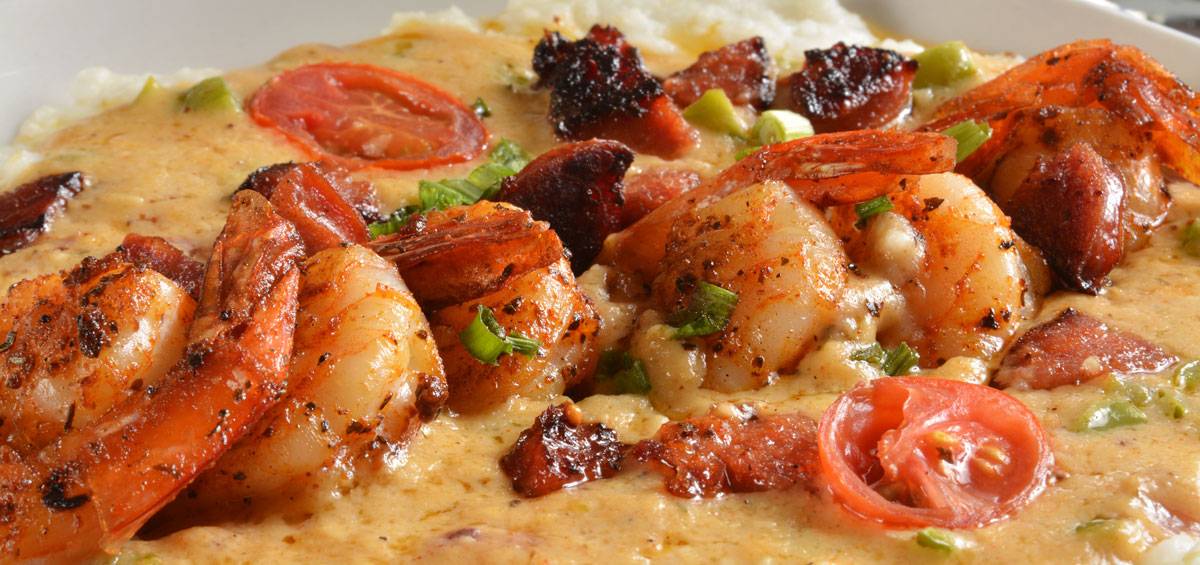
Determined to never forget the past evils of slavery, a new generation is forging a new path ahead and focusing their attention on the valuable African cultural that remains a part of Charleston’s long and celebrated narrative. African-Americans and their descendants have a shared South Carolina history in agricultural, technology, the culinary arts, as well as other artistic expressions that have been an integral part of the Lowcountry’s story.
The city of Charleston grew wealthy mostly through the export of rice and Sea Island cotton and became the central base for many wealthy merchants and landowners. Although the Civil War devastated the city, it remained the center of the economy of South Carolina. More recently, tourism has directed the economy keeping it prosperous, drawing visitors from all over the U.S. and even the world.
Where did the Angel Oak get it's name?
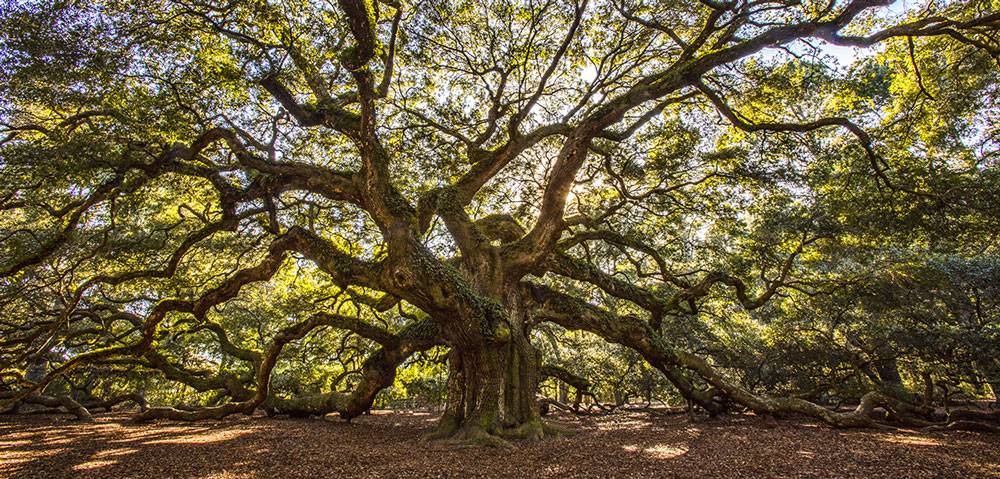
Johns Island, part of the land grant bestowed to the Earl of Shaftsbury under English law, is the largest of the Sea Islands. It was occupied at that time by friendly Native Americans known as Cussoe. To avoid a conflict between the natives and the settlers, the Earl of Shaftsbury purchased the Sea Islands from the Cussoe, setting aside 12,000 acres for Jacob Waight, an influential fellow Quaker from London.
John’s Island is the home to the renowned magnificent Angel Oak Tree, now a South Carolina landmark. The property on which the Angel Oak stands was bestowed to Jacob Waight’s brother, Abraham Waight. Waight's daughter, Martha married Justus Angel (thus the name Angel Oak). The tree stayed in that family for four generations. Their descendants owned the land until the City of Charleston acquired the property from the original owners, turning it into a public park.
What festival does Italy and Charleston share?
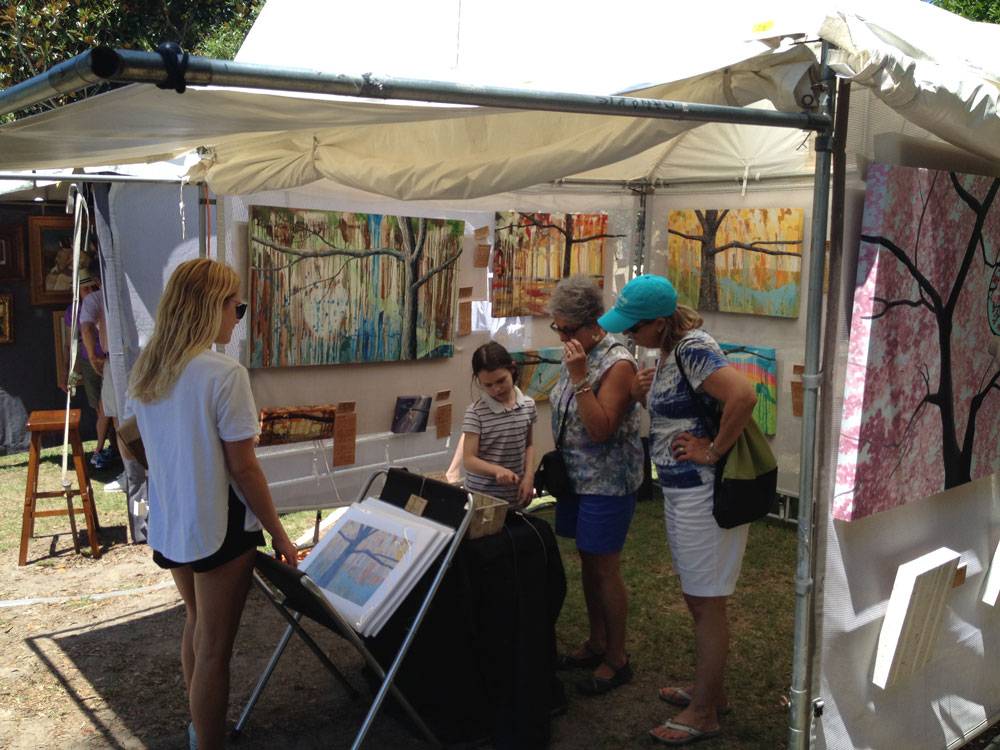
During a 17-day period between May and June each year, Charleston hosts the renowned Spoleto festival. It is the sister festival to the famous Italian village, Spoleto festival in Italy. During this festival, Charleston hosts a plethora of opera, classical, dance, and theatrical performances in the local theaters. The accompanying Piccolo Spoleto festival brings together local and regional talent to exhibit visual, literary and performing arts during that period as well.
The demand for arts and entertainment in Charleston doesn’t end with Spoleto, though, as many theater professionals and artists have moved their careers to the area. The visual arts flourish in Charleston as well, offering tourists and locals innumerable galleries to explore from contemporary to traditional, from fine art to folk art, and from sculpture to installation art.
How many rows are there in a Charleston rainbow?
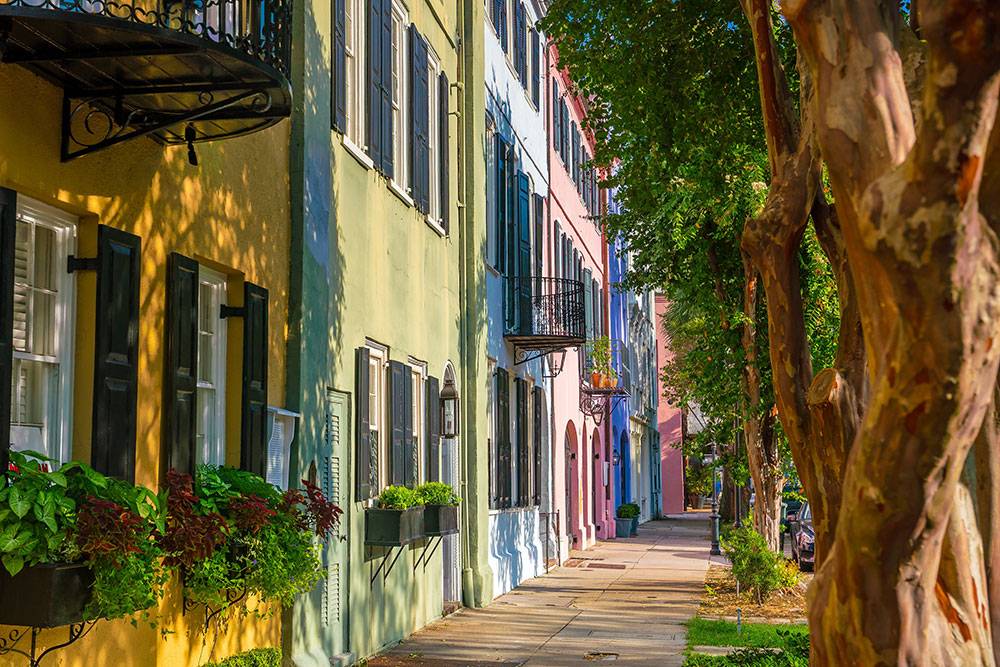
Tourists are naturally drawn to the many beautiful sandy beaches, water sports, the remarkable architecture of the city, and the exquisite restaurants that offer a cuisine that itself can define the history of Charleston. Cobblestone streets, carriage rides and the outdoor Market add to the charm and appeal of Charleston as a vacation destination.
The appealing architecture of Charleston includes and area known as Rainbow Row, a series of thirteen brightly-colored houses along East Bay Street on the Charleston Harbor, each having its own unique history. These waterfront homes are the most photographed locale of Charleston and is the longest grouping of Georgian row houses in the United States. During the 18th century, these buildings were shops and businesses on the street level, having living space above. After the Civil War, these homes fell into disrepair but have, in recent years, been beautifully restored.
What used to be the name of the Charleston Riverdogs?
The Rainbows Baseball Team (1985) was named after Charleston’s “Rainbow Row” to commemorate the allure of the city of Charleston. The Rainbows were renamed in 1994 and became the much-loved Charleston Riverdogs, Charleston’s first minor league team. The Rainbows and their legacy live on through the Riverdogs.
How much has the Cooper River Bridge Run grown since it's inception in 1978?
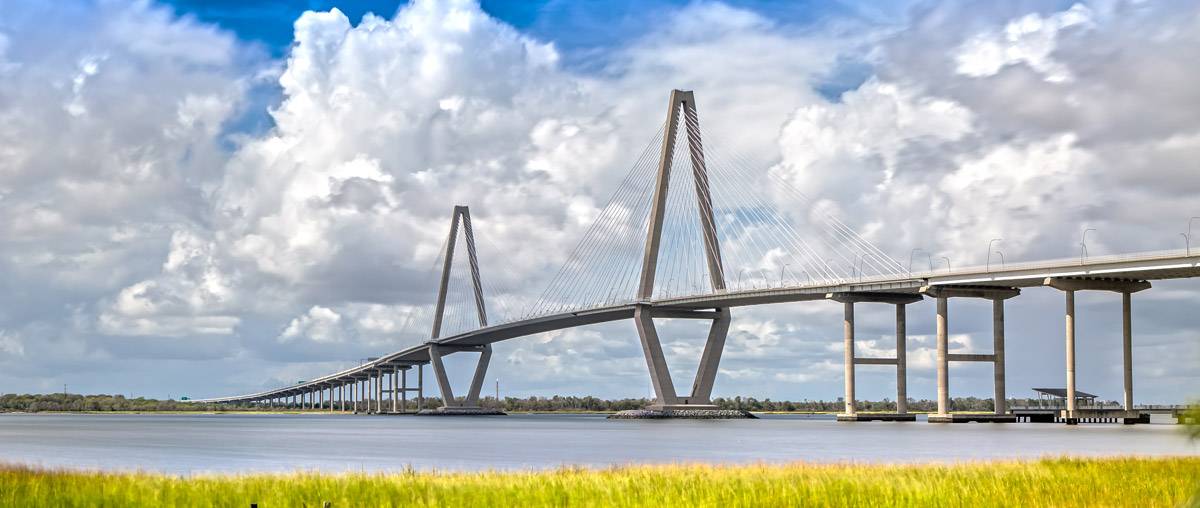
The Cooper River Bridge Run is a one-way, 10-kilometer road running event across the Arthur Ravenel Jr. Bridge between Mount Pleasant and Charleston, South Carolina. It has been classified as an elite event that draws enthusiasts from all around the US (75% travel 60 miles or more) and includes world-class competition. It is the third largest 10-K race in the United States.
The annual Cooper River Bridge Run began in 1978 through the efforts of Dr. Marcus Newberry of MUSC who wanted to get people involved in running and fitness. He set up a committee that included the Charleston Running Club, The Citadel, MUSC, and the College of Charleston resulting in the birth of the annual race that would become a legend. The first race comprised of only 766 runners, of which 653 were male and 113 female. The year 2006 saw a record number of 45,663 registered runners, but in 2007, the race was capped at 40,000 participants.
What does a shrimp boat capatain, the Seewee Indians, and tourists have in common?
Shem Creek of course! Shem Creek in Mount Pleasant has a rich and varied history due to its prime location on the Atlantic coast. It empties into the coast of the Atlantic Ocean and then into the Charleston Harbor making it a prime location for the shipping industry. The original inhabitants of the creek were the Sewee Indians who named it “Shemee”.
It is home to many of local birds, fish, plant life, and crustaceans that became threatened by industry that came to Shem Creek. In the 1700’s the booming Shipbuilding industry began and later, yachts were manufactured there. After that, the Creek drew other industries that used the power of the creek to run factories. But, thanks to Captain C. Magwood, shrimping came to Shem Creek in 1930, changing the Creek and local industry beyond anything that had come before. In just twenty years, the industry of shrimping became one of the most important industries in Mount Pleasant.
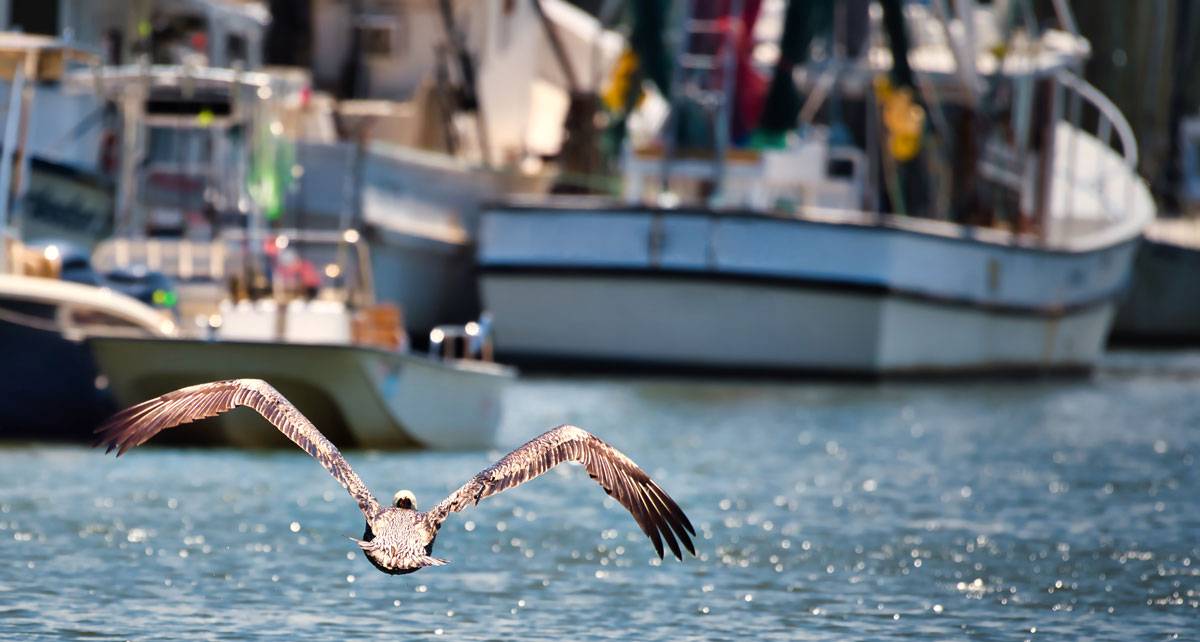
Captain Magwood brought more than just Shrimping to Shem Creek. This new booming industry provided jobs for hundreds of people and became a ‘point of interest’ to visitors/tourists. Tourists needed a place to stay, to eat, and to relax and enjoy themselves. Restaurants started to appear filled with fresh seafood, offering incredible views of the Creek and an opportunity to catch a glimpse of dolphins, the rare manatee, and incredible Great Egrets or Pelicans. Not long after, tourism became the lead industry of the area.
Is Colonial Lake really a lake?
A hidden attraction right in the heart of the city of Charleston only two blocks from Meeting Street was created in 1881. It was commonly known as the Rutledge Street Pond or just “The Pond”. Today it’s called Colonial Lake, although it's actually only a tidal pond encompassing ten acres with wide walkways circling it. It’s a great place to take a stroll, walk your dog, go fishing, or just relax on a bench and soak up the sun.
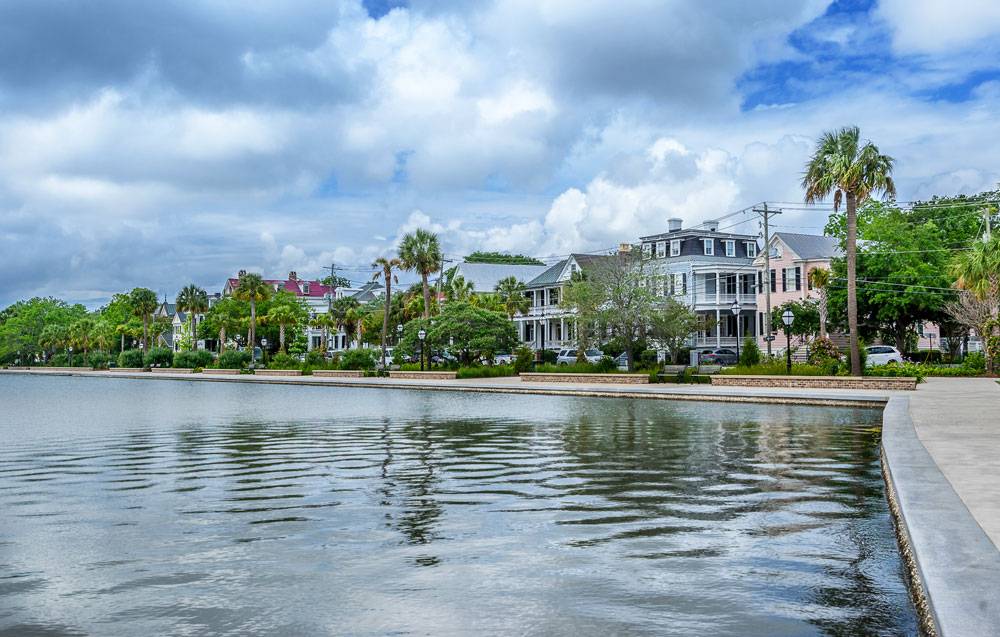
Is Charleston your cup of tea?
Another hidden treasure of the Charleston area is the Charleston Tea Garden. All of the hundreds of tea gardens in the world are located in Asia, Africa and South America, except for the Charleston Tea Garden. It is the only tea garden in North America. It’s where “you can see hundreds of thousands of tea bushes stretching out acre after acre for almost as far as the eye can see.” It is located on the scenic Wadmalaw Island just a few miles south of historic Charleston.

In 1888, when Dr. Charles Shepard founded the Pinehurst Tea Plantation in Summerville, South Carolina, American grown tea become a reality. After his death, the land grew wild until William Barclay Hall purchased land on Wadmalaw Island where he transplanted Dr. Shepard’s award winning teas. Hall was trained during a four-year apprenticeship in London, England to learn the ‘tea’ business. He converted his research and development farm in Wadmalaw to a commercial operation. Hall's vision brought the Charleston Tea Garden into existence. The Bigelow Tea Company bought the garden and a partnership agreement was formed.
The Bigelow family, William Barclay Hall and staff are ready to give the “tea experience of your life”. They offer a very educational tour of the tea factory where you can walk through the tea production building and observe all the equipment it takes to make tea. “A large TV screen along the glassed in gallery describes the entire process.” There is also a 45-minute trolley ride to their state-of-the-art greenhouse and the gift shop has a smorgasbord of tea-related items. Almost seventy five thousand people from all over the world visit the Charleston Tea Garden each year.
The most fun activity in all of Charleston!
Last but not least this fact is gaining more widespread exposure. It is becoming commonly known among locals and tourists alike that the absolute best time you will have while in Charleston is hopping on a boat with Captain Dave and taking a relaxing tour of Charleston harbor!
Ok we admit we are a little biased but you will be too once you take a tour with us. It is always beautiful out on the water and what better way to see the sights than enjoying the breeze while sipping on your favorite drink and learning about the history of Charleston.






